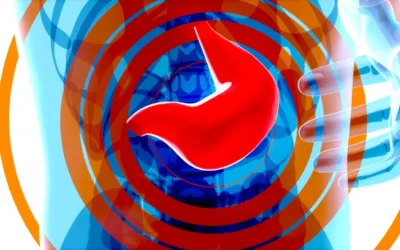Adrenal pseudocysts are rare, fluid-filled sacs that form within or near the adrenal glands. These glands, located above the kidneys, produce vital hormones such as cortisol and adrenaline. Unlike true cysts, pseudocysts lack an epithelial lining, typically arising from tissue degeneration, previous hemorrhage, or trauma. Despite their benign nature, adrenal pseudocysts can sometimes mimic other conditions, making accurate diagnosis essential for appropriate management.
Table of Contents
What Are Adrenal Pseudocysts?
Adrenal pseudocysts are often discovered incidentally during imaging tests conducted for unrelated reasons, such as abdominal ultrasounds, CT scans, or MRIs. They are more common in adults, typically between the ages of 30 and 60, though they can affect people of any age. Most pseudocysts are asymptomatic and benign, but in some cases, they can cause symptoms if they grow large enough to affect surrounding organs or lead to hemorrhaging within the adrenal gland itself.
In some instances, these pseudocysts may expand, causing abdominal pain, discomfort, or pressure on nearby structures. This can result in a range of symptoms, from vague sensations of fullness to more severe pain, depending on the cyst’s size and location. Rarely, pseudocysts can rupture, which may lead to life-threatening bleeding, requiring immediate medical intervention.
Diagnostic Challenges
Diagnosing adrenal pseudocysts can be difficult due to their similarity in appearance to other adrenal conditions, including malignant tumors or metastases from cancers such as lung or breast cancer. On imaging scans, these cysts may resemble adrenal tumors, cystic neoplasms, or metastatic growths, creating uncertainty about their nature. This overlap in radiographic features makes careful diagnostic workups crucial.
Imaging is the most common method of identifying adrenal pseudocysts, with CT scans and MRIs being the primary tools used to detect and monitor them. These scans allow clinicians to evaluate the size, shape, and internal characteristics of the cyst. However, imaging alone may not always definitively confirm whether the lesion is benign or malignant. In cases of uncertainty, a biopsy may be considered, although it carries certain risks, such as infection or hemorrhage.
Symptoms and Clinical Presentation
While adrenal pseudocysts are often asymptomatic, larger cysts can produce a variety of symptoms depending on their size and the organs they compress. Patients may experience abdominal or flank pain, discomfort, or sensations of pressure due to the cyst’s mass effect. In some cases, pseudocysts may interfere with the adrenal gland’s ability to produce hormones, leading to symptoms of adrenal insufficiency or hyperfunction. This hormonal disruption can manifest as fatigue, muscle weakness, weight loss, or high blood pressure.
In rarer instances, the rupture of a pseudocyst can cause acute hemorrhaging within the adrenal gland, which can be life-threatening if not treated promptly. This highlights the importance of regular monitoring for patients diagnosed with larger or symptomatic pseudocysts.
Treatment Options
The management of adrenal pseudocysts depends on various factors, including the size of the cyst, the presence of symptoms, and whether the lesion shows any signs of malignancy. For small, asymptomatic pseudocysts, a conservative approach may be taken, with periodic imaging to monitor for changes in size or structure. This approach helps avoid unnecessary interventions while ensuring that the cyst remains stable.
In cases where the cyst is large, symptomatic, or has characteristics that suggest malignancy, surgical intervention may be necessary. Laparoscopic adrenalectomy, a minimally invasive procedure, is the most common method used to remove pseudocysts, and, in some cases, the entire adrenal gland. Surgery is also recommended when there is a possibility that the cyst may be cancerous, as early removal can help prevent complications.
Patients who undergo surgery for adrenal pseudocysts generally experience favorable outcomes, with most individuals making a full recovery. However, continued follow-up is important, especially in cases where hormonal imbalances or other complications were present before surgery.
The Importance of Accurate Diagnosis
Accurate diagnosis of adrenal pseudocysts is crucial to avoid unnecessary treatments or missed diagnoses. Misinterpreting a benign pseudocyst as a malignant tumor can lead to overtreatment, including unnecessary surgery. Conversely, failing to recognize a malignant cyst can result in delayed or inappropriate care. Given the complexity of diagnosing adrenal pseudocysts, a multidisciplinary approach involving radiologists, endocrinologists, and surgeons is often required to ensure optimal patient outcomes.
Although adrenal pseudocysts are rare, healthcare providers should be aware of their potential when evaluating patients with nonspecific symptoms or abnormal imaging results. An accurate diagnosis can help guide appropriate management and reduce the risk of complications, ensuring that patients receive the care best suited to their condition.
Conclusion
Adrenal pseudocysts, though uncommon, present a significant diagnostic challenge due to their ability to mimic more serious conditions. Accurate diagnosis is essential for guiding treatment decisions and preventing complications. Advances in diagnostic imaging and surgical techniques have improved the outlook for patients with adrenal pseudocysts, and most can expect positive outcomes when the condition is properly managed.
In an era of increasingly personalized healthcare, the diagnosis and treatment of adrenal pseudocysts underscore the need for precision and interdisciplinary collaboration. Ensuring that patients receive the right care for their unique circumstances remains a critical priority in the ongoing effort to optimize outcomes for rare and complex conditions.
References
- National Institute of Diabetes and Digestive and Kidney Diseases (NIDDK). (2022). Adrenal Gland Disorders. Retrieved from https://www.niddk.nih.gov
- American Association of Endocrine Surgeons (AAES). (2023). Adrenalectomy: Surgical Indications and Techniques. Retrieved from https://www.endocrinesurgery.org





0 Comments